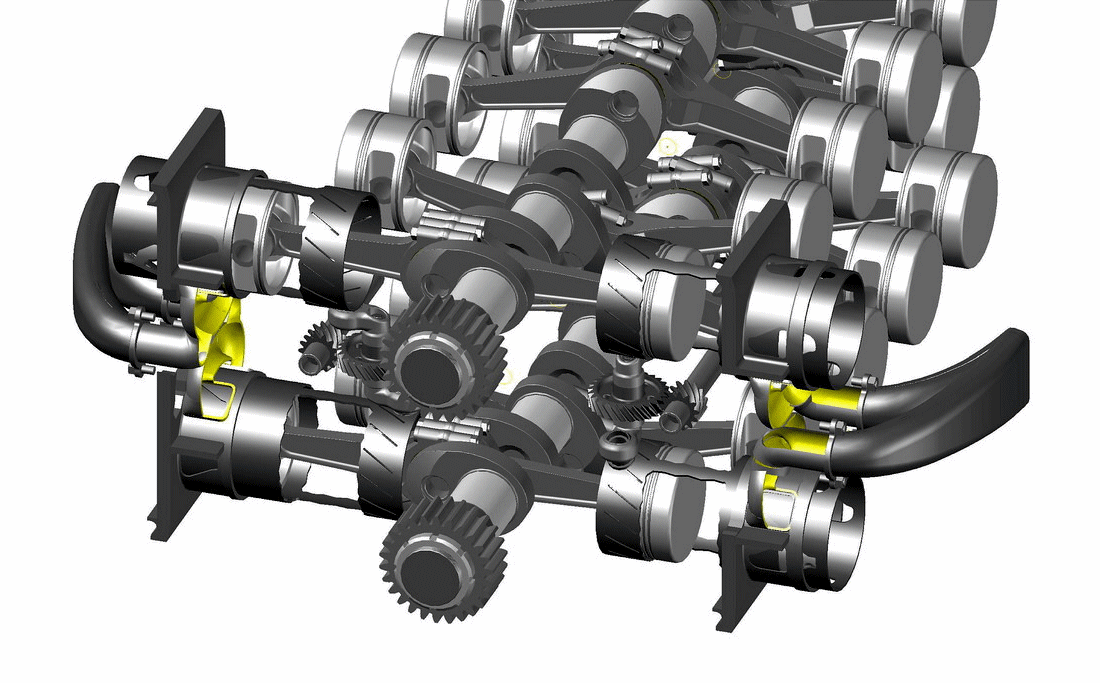
- Login or Register
No account yet? Sign up
Yes, so the top front LHS cylinder fires at the same time as the bottom rear LHS cylinder.J.A.W. wrote: ↑29 Apr 2017, 11:32Yet here: http://www.enginehistory.org/fo/FO.shtml
..it is claimed that the firing order is phased by 360`- lower bank-to-top bank..
They could have but it would require the crankshaft to be phased at 30° as you said. Or 90°.J.A.W. wrote: ↑30 Apr 2017, 02:27Indeed it seems a bit difficult to discern, even for the period technical reviewers..
I have read reports that emphatically state that twin-fire was avoided in the Sabre,
& others that claim it was expected given the phasing - to get individual firing, from
24 4T cylinders it would be one firing every 30`of phased twin 12 cyl crank rotation..
P&W did their own to avoid royalties, as far as I understand.J.A.W. wrote: ↑30 Apr 2017, 02:49The sleeve drive matter is of interest in itself, esp' the 3 large inline crank sleeve valve units..
( Bristol worked out a multiplicity of clockwork-like gear wheels for its Hercules,& X2'd it in Centaurus).
Pratt & Whitney devised their own sleeve drive system ( to avoid patent royalties, & or NIH?),
but P & W's H-24 efforts certainly ended up, like R-R's - as over-sized for the power output, vs Sabre..
Frank Halford with his prior design experience in such compact but multitudinous engines, did a good job..
T-C, well, if your interest is 'economy' based fine, & some do feel that 1 carb on a Triumph twin gives aTommy Cookers wrote: ↑27 Apr 2017, 12:37...Doug Hele said of the 750 twins (1973 ?) that the noise-regulated exhaust systems rendered pointless the twin carb option, but people expected them, my single-carb 750 was more economical than almost anything else...
Classic Ford 302 small-block V-8's had external balancers on each end of the crank. This was lighter and cheaper than fully counterweighting and balancing the crank inside the engine. Of course when you build a performance 302, you start by throwing out the stock crank and replacing it with an internally counterweighted and balanced crank.J.A.W. wrote: ↑04 May 2017, 05:17Here is an external balance method of quelling the 'rocking couple' effects of a 120' triple crankshaft..
www.nissan-global.com/EN/TECHNOLOGY/OVE ... r12de.html
Motorcycles usually use complex & power-sapping internal balance shafts, albeit neatly hidden internally..
..but the Nissan system ought to be functional for aircraft, & snow & marine craft - which have enclosed engine units..